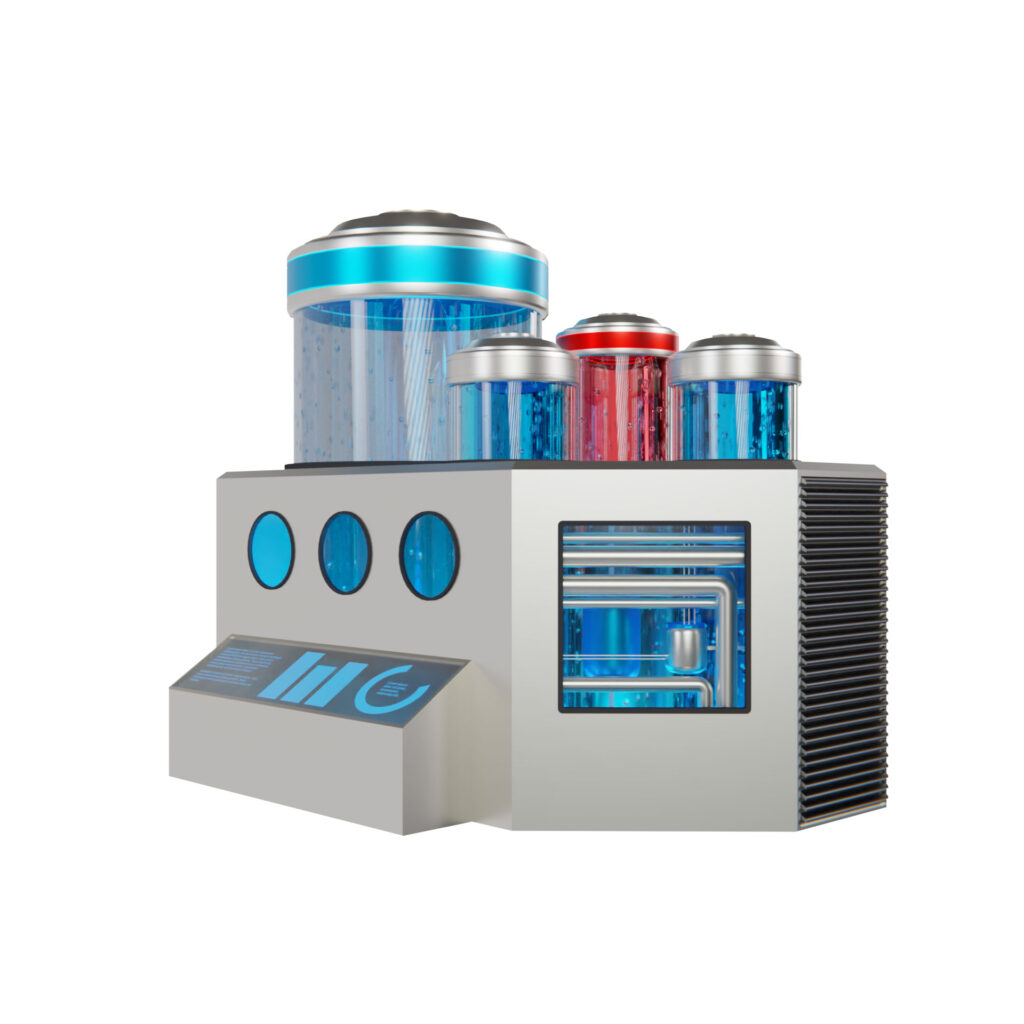
In response to climate change and the increasing pressure to develop sustainable energy sources, HPE-Konstanz is focusing on innovative technologies that are both environmentally friendly and economically viable. Green hydrogen, produced from renewable energy sources such as hydro, wind and solar power, offers a promising solution for reducing fossil fuels. As engineering service providers, we are often the first to break new ground when markets change. This challenge has taught us to act courageously and keep an eye on the future of innovation. Over the past 25 years, we have proven that we have the expertise to develop systems of the highest standard for the industry. It is clear to us that hydrogen will play a central role in the future of energy – and we are ready to make a decisive contribution with our experience. Through small, targeted innovations, we can help to make hydrogen technologies not only technically but also economically attractive. Together with our customers and strategic partners, we are actively shaping the energy transition of tomorrow.
Our vision is to actively shape the future of energy by unleashing the diverse potential of hydrogen. Just as the steam engine drove the industrial revolution, we believe that hydrogen will fundamentally change the way we generate, store and use energy. We want to contribute to making this technology more efficient and economical through innovative approaches in the production, storage and distribution of hydrogen. Our goal is an emission-free, sustainable energy world in which hydrogen plays a central role – fuelled by pioneering innovations and collaboration with strong partners.
Hydrogen plays a central role in the energy transition and the decarbonisation of many sectors. As an emission-free energy carrier produced from renewable sources such as wind and solar energy, it offers a sustainable alternative to fossil fuels. Hydrogen can be used in a variety of ways, for example in manufacturing, transport or for storing renewable energy. Due to its versatility and environmental friendliness, it is seen as a key factor in the global energy landscape of the future, with far-reaching potential for reducing CO2 emissions.
Electrolysis is a proven process in which water is split into hydrogen (H₂) and oxygen (O₂) using an electric current. At the heart of this process is the electrolyser, which conducts the current through the water and enables the chemical reaction. One of the most common processes is PEM electrolysis (Proton Exchange Membrane), which is characterised by high efficiency and fast reaction times. Despite the advantages, there are still technological challenges, particularly in terms of cost, efficiency and scaling up to industrial scale. As engineers, we know that the further development of electrolysis is interdisciplinary. It’s not just about mechanical engineering, but also about integrating chemistry, materials science and thermodynamic processes. We tackle these challenges with courage and innovative strength. Together with our strategic partners, we develop new materials and optimised processes to make the process not only more efficient, but also more economically viable. Our vision is to use technological advances to make hydrogen production a central component of the sustainable energy transition.

Hydrogen offers clear advantages in many areas of application. One of the most important applications is its use in fuel cells, which generate electricity from hydrogen and oxygen. This technology is particularly promising in the mobility sector, as fuel cell vehicles offer a greater range and shorter refuelling times than conventional electric vehicles. In addition, hydrogen can be burnt directly and serves as a clean substitute for fossil fuels, especially in industrial processes with high energy requirements, such as steel and cement production. Hydrogen can also be used as an energy storage medium in power generation to stabilise renewable energies and make them available for times when the sun or wind are not available. The flexibility of using hydrogen for power generation, combustion or energy storage makes it an attractive solution in many areas. Engineers like us are continuously working to further improve the efficiency and cost-effectiveness of these applications in order to establish hydrogen as a sustainable energy carrier.
Storing hydrogen is one of the biggest challenges in utilising this technology. There are various approaches, such as storing hydrogen under high pressure as a gas or by liquefying it at extremely low temperatures. Both methods are established, but require high technical standards and involve safety risks. There are also innovative processes that are not yet ready for series production, such as the chemical bonding of hydrogen in liquids or solids, which release the gas when required. These approaches offer great potential for making storage safer and more efficient. The development of safe solutions is crucial, as hydrogen is a highly flammable gas with high safety requirements. There is plenty of scope for future innovations that could make hydrogen storage safer, cheaper and more efficient. Engineers are continuously working on improving these technologies to optimise the storage of hydrogen and thus create the basis for widespread industrial use.
The distribution of hydrogen offers enormous potential, as it can be produced almost anywhere where surplus energy from renewable sources such as wind or solar power is available. Of particular interest is the possibility of utilising hydrogen directly where it is produced, which significantly improves the overall energy balance. Eliminating intermediate steps such as storage and transport minimises energy losses and reduces costs. This decentralised production and distribution opens up new opportunities for engineers of the future. The development of efficient distribution systems as well as solutions for the direct use of hydrogen on site are crucial to drive the technology forward. Engineers play a central role in developing new concepts that integrate hydrogen into different sectors and support the global transition to renewable energy.